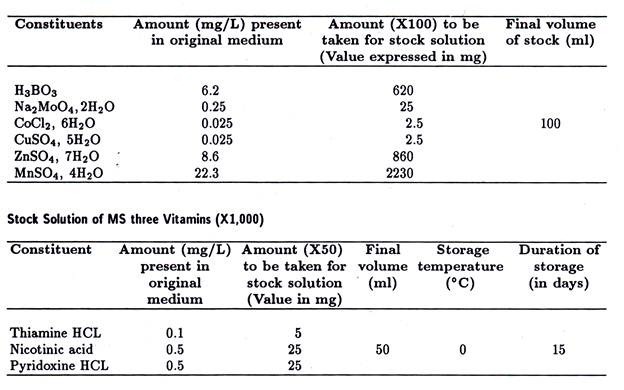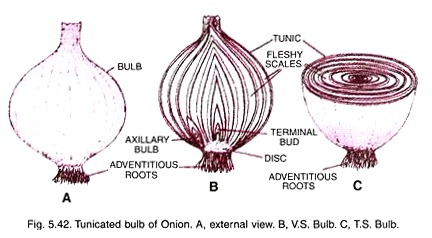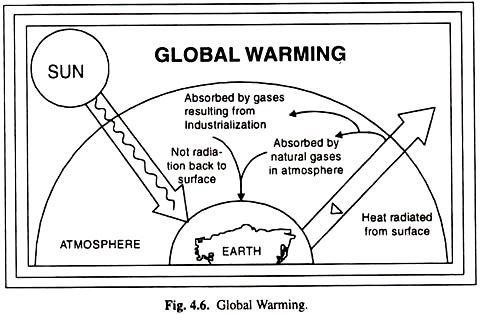ADVERTISEMENTS:
This article provides a close look on Enzymology.
Enzymes are biocatalysts — the catalysts of life. A catalyst is defined as a substance that increases the velocity or rate of a chemical reaction without itself undergoing any change in the overall process.
Enzymes may be defined as biocatalysts synthesized by living cells. They are protein in nature, colloidal and thermolabile in character, and specific in their action. In recent years, certain non-protein enzymes (chemically RNA) have also been identified.
Nomenclature and Classification:
In the early days, the enzymes were given names by their discoverers in an arbitrary manner. For example, the names pepsin, trypsin and chymotrypsin convey no information about the function of the enzyme or the nature of the substrate on which they act.
ADVERTISEMENTS:
Enzymes are sometimes considered under two broad categories:
(a) Intracellular enzymes:
They are functional within cells where they are synthesized,
ADVERTISEMENTS:
(b) Extracellular enzymes:
These enzymes are active outside the cell; all the digestive enzymes belong to this group. The International Union of Biochemistry (IUB) appointed an Enzyme Commission in 1961. This committee made a thorough study of the existing enzymes and devised some basic principles for the classification and nomenclature of enzymes. Since 1964, the IUB system of enzyme classification has been in force. Enzymes are divided into six major classes (in that order).
Each class on its own represents the general type of reaction brought about by the enzymes of that class:
1. Oxidoreductases:
Enzymes involved in oxidation-reduction reactions.
2. Transferases:
Enzymes that catalyse the transfer of functional groups.
3. Hydrolases:
Enzymes that bring about hydrolysis of various compounds.
ADVERTISEMENTS:
4. Lyases:
Enzymes specialised in the addition or removal of water, ammonia, CO2 etc.
5. Isomerases:
Enzymes involved in all the isomerization reactions.
ADVERTISEMENTS:
6. Ligases:
Enzymes catalysing the synthetic reactions (Greek: ligate—to bind) where two molecules are joined together and ATP is used. [The word OTHLIL (first letter in each class) may be memorized to remember the six classes of enzymes in the correct order].
Each class in turn is subdivided into many subclasses which are further divided. A four digit Enzyme Commission (E. C.) number is assigned to each enzyme representing the class (first digit), subclass (second digit), sub-sub class (third digit) and the individual enzyme (fourth digit).
In the Table 66.1, selected examples for the six classes of enzymes are given.
Chemical Nature of Enzymes:
All the enzymes are invariably proteins. In recent years, however, a few RNA molecules have been shown to function as enzymes. Each enzyme has its own tertiary structure and specific conformation which is very essential for its catalytic activity. The functional unit of the enzyme is known as holoenzyme which is often made up of apoenzyme (the protein part) and a coenzyme (non-protein organic part). Holoenzyme (active enzyme) → Apoenzyme (protein part) + Coenzyme (non-protein part).
Active Site:
Enzymes are big in size compared to substrates which are relatively smaller. Evidently, a small portion of the huge enzyme molecule is directly involved in the substrate binding and catalysis. The active site (or active centre) of an enzyme is defined as the small region at which the substrate(s) binds and participates in the catalysis.
Salient Features of Active Site:
1. The existence of active site is due to the tertiary structure of protein resulting in three dimensional native conformation.
2. The active site is made up of amino acids (known as catalytic residues) which are far from each other in the linear sequence of amino acids (primary structure of protein). For instance, the enzyme lysozyme has 129 amino acids. The active site is formed by the contribution of amino acid residues numbered 35, 52, 62, 63 and 101.
ADVERTISEMENTS:
3. The active site is not rigid in structure and shape. It is rather flexible to promote the specific substrate binding.
4. Generally, the active site possesses a substrate binding site and a catalytic site. The latter is for the catalysis of the specific reaction.
5. Of the 20 amino acids that could be present in enzyme structure, only some of them are repeatedly found at the active sites of various enzymes. These amino acids are serine, aspartate, histidine, cysteine, lysine, arginine, glutamate, tyrosine etc. Among these amino acids, serine is the most frequently found.
6. The substrate [S| binds the enzyme (E) at the active site to form enzyme-substrate complex (ES). The product (P) is released after the catalysis and the enzyme is available for reuse.
Enzyme Inhibition:
Enzyme inhibitor is defined as a substance which binds with the enzyme and brings about a decrease in catalytic activity of that enzyme. The inhibitor may be organic or inorganic in nature.
ADVERTISEMENTS:
There are two broad categories of enzyme inhibition:
1. Reversible inhibition.
2. Irreversible inhibition.
1. Reversible Inhibition:
The inhibitor binds non-covalently with enzyme and the enzyme inhibition can be reversed if the inhibitor is removed.
The reversible inhibition is further sub-divided into:
I. Competitive inhibition
ADVERTISEMENTS:
II. Non-competitive inhibition
I. Competitive inhibition:
The inhibitor (I) which closely resembles the real substrate (S) is regarded as a substrate analogue. The inhibitor competes with substrate and binds at the active site of the enzyme but does not undergo any catalysis. As long as the competitive inhibitor holds the active site, the enzyme is not available for the substrate to bind.
The relative concentration of the substrate and inhibitor and their respective affinity with the enzyme determines the degree of competitive inhibition. The inhibition could be overcome by a high substrate concentration. In competitive inhibition, the Km value increases whereas Vmax remains unchanged.
The enzyme succinate dehydrogenase (SDH) is a classical example of competitive inhibition with succinic acid as its substrate. Malonic acid has structural similarity with succinic acid and compete with the substrate for binding at the active site of SDH.
Some more examples of the enzymes with substrates and competitive inhibitors of biological significance are given in Table 66.2.
Antimetabolites:
These are the chemical compounds that block the metabolic reactions by their inhibitory action on enzymes. Antimetabolites are usually structural analogues of substrates and thus are competitive inhibitors (Table 66.2). They are in use for the treatment of cancer, gout etc. The term antivitamins is used for the antimetabolites which block the biochemical actions of vitamins causing deficiencies, e.g., sulphanilamide, dicumarol.
II. Non-competitive inhibition:
The inhibitor binds at a site other than the active site on the enzyme surface. This binding impairs the enzyme function. The inhibitor has no structural resemblance with the substrate. However, there usually exists a strong affinity for the inhibitor to bind at the second site.
In fact, the inhibitor does not interfere with the enzyme-substrate binding. But the catalysis is prevented, possibly due to a distortion in the enzyme conformation. The inhibitor generally binds with the enzyme as well as the ES complex. For non-competitive inhibition, the Km value is unchanged while Vmax is lowered.
Heavy metal ions (Ag+, Pb2+, Hg2+ etc.) can non-competitively inhibit the enzymes by binding with cysteinyl sulfhydryl groups.
2. Irreversible Inhibition:
The inhibitors bind covalently with the enzymes and inactivate them, which is irreversible. These inhibitors are usually toxic substances which may be present naturally or man-made. lodoacetate is an irreversible inhibitor of the enzymes like papain and glyceraldehyde 3- phosphate dehydrogenase, lodoacetate combines with sulfhydryl (-SH) groups at the active site of these enzymes and makes them inactive.
Diisopropyl fluorophosphate (DFP) is a nerve gas developed by the Germans during Second World War. DFP irreversibly binds with enzymes containing serine at the active site, e.g. serine proteases, acetylcholine esterase.
Suicide inhibition:
In this type of irreversible inhibition, the original inhibitor is converted to a more potent form by the same enzyme that ought to be inhibited e.g., allopurinol, an inhibitor of xanthine oxidase, gets converted to alloxanthine, a more effective inhibitor of the enzyme.
Enzyme Specificity:
Enzymes are highly specific in their action when compared with the chemical catalysts. The occurrence of thousands of enzymes in the biological system might be due to the specific nature of enzymes.
Three types of enzyme specificity are well-recognised:
1. Stereo specificity,
2. Reaction specificity,
3. Substrate specificity,
Specificity is a characteristic property of the active site.
1. Stereo Specificity or Optical Specificity:
Stereoisomers are the compounds which have the same molecular formula, but differ in their structural configuration.
The enzymes act only on one isomer and, therefore, exhibit stereoisomerism.
e.g. L-amino acid oxidase and D-amino acid oxidase act on L- and D-amino acids respectively.
Hexokinase acts on D-hexoses;
Glucokinase on D-glucose;
Amylase acts on α-glycosidic linkages;
Cellulase cleaves β-glycosidic bonds.
Stereo specificity is explained by considering three distinct regions of substrate molecule specifically binding with three complementary regions on the surface of the enzyme (Fig. 66.6). The class of enzymes belonging to isomerizes do not exhibit stereo specificity, since they are specialized in the inter-conversion of isomers.
2. Reaction Specificity:
The same substrate can undergo different types of reactions, each catalysed by a separate enzyme and this is referred to as reaction specificity. An amino acid can undergo transamination, oxidative deamination, decarboxylation, racemization etc. The enzymes however, are different for each of these reactions.
3. Substrate Specificity:
The substrate specificity varies from enzyme to enzyme. It may be either absolute, relative or broad.
(a) Absolute substrate specificity:
Certain enzymes act only on one substrate e.g. glircokinase acts on glucose to give glucose 6-phosphate, urease cleaves urea to ammonia and carbon dioxide.
(b) Relative substrate specificity:
Some enzymes act on structurally related substances. This, in turn, may be dependent on the specific group or a bond present. The action of trypsin and chymotrypsin is a good example for group specificity. Trypsin hydrolyses peptide linkage involving arginine or lysine. Chymotrypsin cleaves peptide bonds attached to aromatic amino acids (phenylalanine, tyrosine and tryptophan). Examples of bond specificity- glucosidases acting on glycosidic bonds of carbohydrates, lipases cleaving ester bonds of lipids etc.
(c) Broad specificity:
Some enzymes act on closely related substrates which is commonly known as broad substrate specificity, e.g. hexokinase acts on glucose, fructose, mannose and glucosamine and not on galactose.
Coenzymes:
Many enzymes require certain non-protein small additional factors, collectively referred to as cofactors for catalysis. The cofactors may be organic or inorganic in nature. The non-protein, organic, low molecular weight and dialysable substance associated with enzyme function is known as coenzyme.
The functional enzyme is referred to as holoenzyme which is made up of a protein part (apoenzyme) and a non-protein part (coenzyme). The term activator represents the inorganic cofactor (like Ca2+, Mg2+, Mn2+ etc.) necessary to enhance enzyme activity.
Coenzymes are second substrates:
Coenzymes are often regarded as the second substrates or co-substrates, since they have affinity with the enzyme comparable with that of the substrates. Coenzymes undergo alterations during the enzymatic reactions, which are later regenerated. This is in contrast to the substrate which is converted to the product. Coenzymes participate in various reactions involving transfer of atoms or groups like hydrogen, aldehyde, keto, amino, acyl, methyl, carbon dioxide etc. Coenzymes play a decisive role in enzyme function.
Coenzymes from B-complex vitamins:
Most of the coenzymes are the derivatives of water soluble B-complex vitamins. In fact, the biochemical functions of B-complex vitamins are exerted through their respective coenzymes. In Table. 66.3, a summary of the vitamin related coenzymes with their functions is given.
Non-vitamin coenzymes:
Not all coenzymes are vitamin derivatives. There are some other organic substances, which have no relation with vitamins but function as coenzymes. They may be considered as non-vitamin coenzymes e.g. ATP, CDP, and UDP etc.
Nucleotide coenzymes:
Some of the coenzymes possess nitrogenous base, sugar and phosphate. Such coenzymes are, therefore, regarded as nucleotides e.g. NAD+, NADP+, FMN, FAD, coenzyme A, UDPG etc.
Coenzymes do not decide enzyme specificity:
A particular coenzyme may participate in catalytic reactions along with different enzymes. For instance, NAD+ acts as a coenzyme for lactate dehydrogenase and alcohol dehydrogenase. In both the enzymatic reactions, NAD+ is involved in hydrogen transfer. The specificity of the enzyme is mostly dependent on the apoenzyme and not on the coenzyme.
Mechanism of Enzyme Action:
Catalysis is the prime function of enzymes. The nature of catalysis taking place in the biological system is similar to that of non-biological catalysis. For any chemical reaction to occur, the reactants have to be in an activated state or a transition state.
Enzymes lower activation energy:
The energy required by the reactants to undergo the reaction is known as activation energy. The reactants when heated attain the activation energy. The catalyst (or the enzyme in the biological system) reduces the activation energy and this causes the reaction to proceed at a lower temperature. Enzymes do not alter the equilibrium constants; they only enhance the velocity of the reaction.
The role of a catalyst or an enzyme is comparable with a tunnel made in a mountain to reduce the barrier as illustrated in Fig. 66.7. The enzyme lowers energy barrier of reactants, thereby making the reaction go faster. The enzymes reduce the activation energy of the reactants in such a way that all the biological systems occur at body temperature (below 40°C).
Enzyme-substrate Complex Formation:
The prime requisite for enzyme catalysis is that the substrate (S) must combine with the enzyme (E) at the active site to form enzyme- substrate complex (ES) which ultimately results in the product formation (P).
A few theories have been put forth to explain mechanism of enzyme-substrate complex formation (Fig. 66.8).
Lock and Key Model or Fischer’s Template Theory:
According to this model, the structure or conformation of the enzyme is rigid. The substrate fits to the binding site (now active site) just as a key fits into the proper lock or a hand into the proper glove. Thus the active site of an enzyme is a rigid and pre-shaped template where only a specific substrate can bind. This model does not give any scope for the flexible nature of enzymes, hence the model totally fails to explain many facts of enzymatic reactions, the most important being the effect of allosteric modulators.
Induced Fit Theory or Koshland’s Model:
Koshland, in 1958, proposed a more acceptable and realistic model for enzyme-substrate complex formation. As per this model, the active site is not rigid and pre-shaped. The essential features of the substrate binding site are present at the nascent active site.
The interaction of the substrate with the enzyme induces a fit or a conformation change in the enzyme, resulting in the formation of a strong substrate binding site. Further, due to induced fit, the appropriate amino acids of the enzyme are repositioned to form the active site and bring about the catalysis (Fig. 66.8). Induced fit model has sufficient experimental evidence from the X-ray diffraction studies. Koshland’s model also explains the action of allosteric modulators and competitive inhibition on enzymes.
Substrate Strain Theory:
In this model, the substrate is strained due to the induced conformation change in the enzyme. It is also possible that when a substrate binds to the preformed active site, the enzyme induces a strain to the substrate. The strained substrate leads to the formation of product. The concept of substrate strain explains the role of enzyme in increasing the rate of reaction. In fact, a combination of the induced fit model with the substrate strain is considered to be operative in the enzymatic action.
Mechanism of Enzyme Catalysis:
The formation of an enzyme-substrate complex (ES) is very crucial for the catalysis to occur. It is estimated that an enzyme catalysed reaction proceeds 106 to 1012 times faster than a non- catalysed reaction. It is worthwhile to briefly understand the ways and means through which the catalytic process takes place leading to the product formation.
The enhancement in the rate of the reaction is mainly due to four processes:
1. Acid-base catalysis;
2. Substrate strain;
3. Covalent catalysis;
Isoenzymes:
The multiple forms of an enzyme catalysing the same reaction are isoenzymes or isozymes. They, however, differ in their physical and chemical properties which include the structure, electrophoretic and immunological properties, Km and Vmax values, pH optimum, relative susceptibility to inhibitors and degree of denaturation. e.g. lactate dehydrogenase (5 isoenzymes), creatine kinase (3 isoenzymes).








